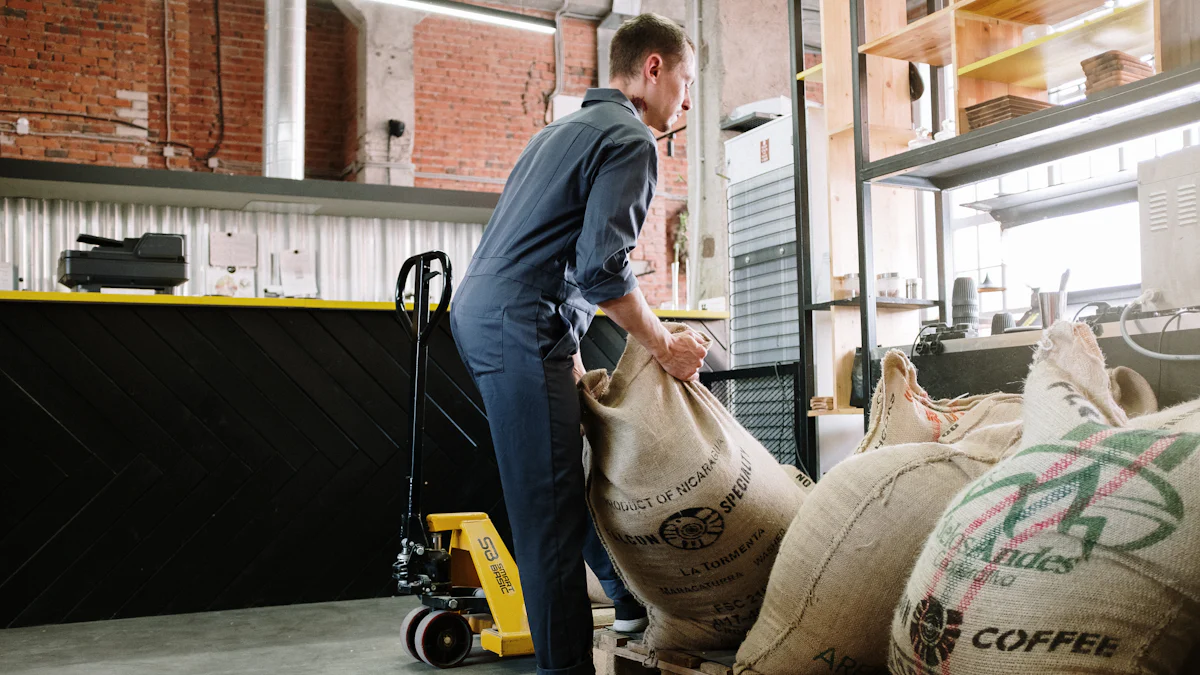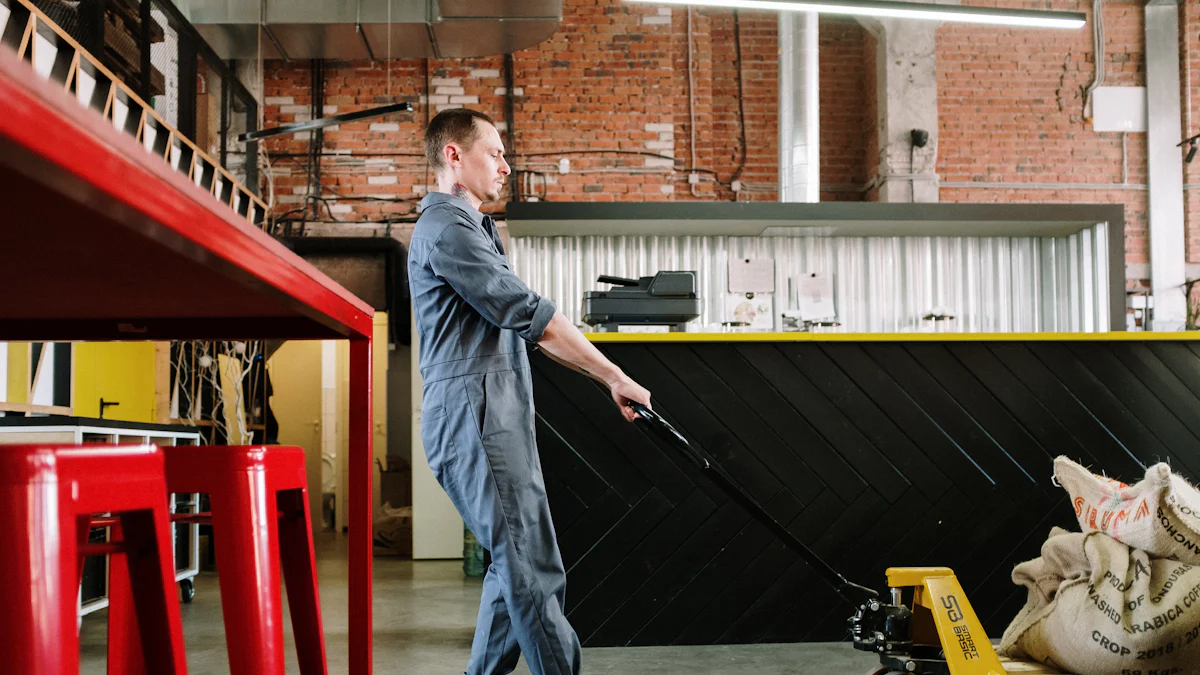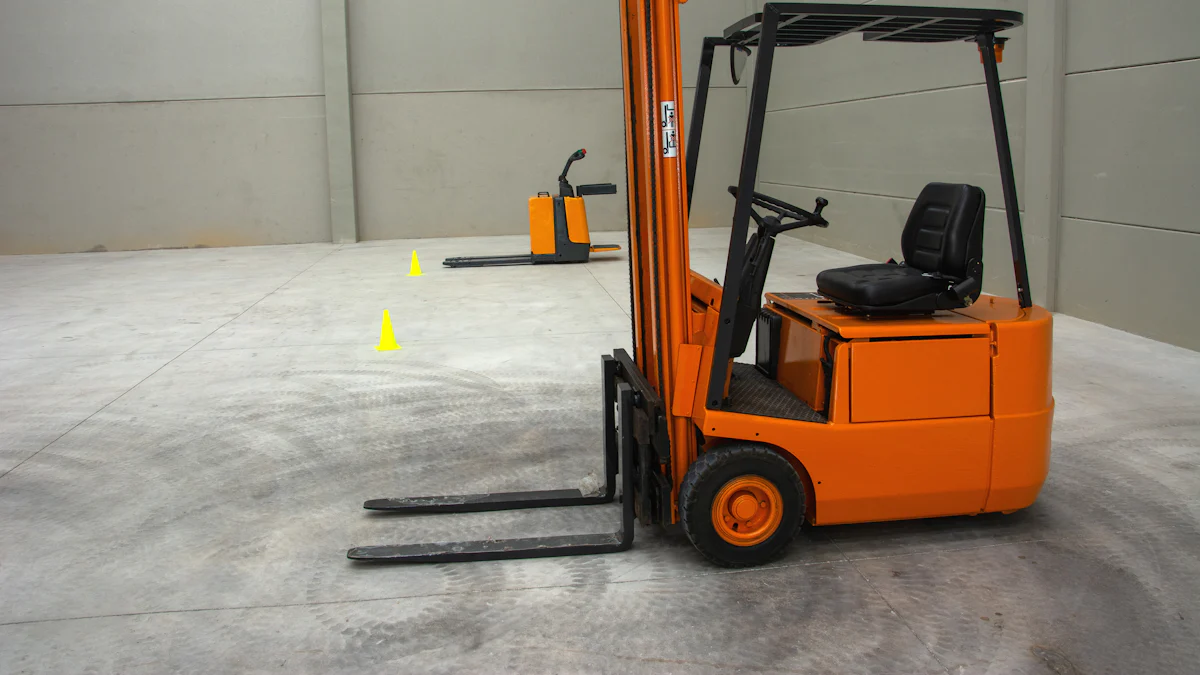
Manual Pallet Jacks are essential tools in various industries, contributing significantly to the global revenue. Understanding the precise lifting heights of these jacks is crucial for optimizing operational efficiency. This blog post aims to delve into the specifics of manual pallet jack lifting heights, shedding light on standard and specialized ranges. By grasping this information, individuals can make informed decisions when selecting the right equipment for their needs.
Understanding Manual Pallet Jacks

When it comes to Manual Pallet Jacks, they are the go-to choice for light loads and confined spaces. These jacks operate manually, utilizing the operator’s weight to propel the material forward. Due to their lack of electronic components, manual pallet jacks are low-maintenance and seldom require repairs. However, depending on the load’s weight, using manual pallet jacks can strain the operator and be challenging to maneuver efficiently.
What is a Manual Pallet Jack?
Basic Components
- Handle for manual operation
- Forks for lifting pallets
- Steering wheels for mobility
Common Uses
- Transporting goods in warehouses
- Loading/unloading trucks
- Stocking shelves in retail stores
Types of Manual Pallet Jacks
Standard Pallet Jacks
- Most common type
- Ideal for lighter loads
- Simple pump handle operation
Low-profile Pallet Jacks
- Designed for tight spaces
- Can lower to heights as low as 1.75 inches
High-lift Pallet Jacks
- Capable of lifting loads up to 33 inches high
- Eliminates the need for additional lifting equipment
Scissor Lift Pallet Jacks
- Offers quick lifting up to 833mm in height
- Efficient solution for various applications
Lifting Heights of Manual Pallet Jacks

Standard Lifting Heights
Typical Range
- Manual Pallet Jacks can lift loads to heights ranging from 4 to 8 inches off the ground.
- The lifting capacity varies based on the type of pallet jack and its features.
- Factors such as load distribution and weight capacity influence the lifting height.
Specialized Lifting Heights
Low-profile Lifting Heights
- Manual Pallet Jacks are available that can lower to heights as low as 1.75 inches for specific applications.
- The choice of a pallet jack should be based on the specific business needs.
High-lift Lifting Heights
- Manual Pallet Jacks can lift loads up to 33 inches high, eliminating the need for additional lifting equipment.
- High-lift pallet jacks provide versatility in handling various load heights efficiently.
Scissor Lift Heights
- Scissor lift pallet jacks offer quick lifting up to 833mm in height, making them an efficient solution for different applications.
Practical Applications and Considerations
Choosing the Right Pallet Jack
Assessing your needs
- Assess the operational requirements of your facility to determine the suitable Pallet Jack specifications.
- Consider factors such as load weight, frequency of use, and available storage space.
- Evaluate the need for specialized features like adjustable forks or extended reach capabilities.
- Consult with warehouse managers or material handling experts for tailored recommendations.
Matching lifting height to application
- Match the lifting height of the Pallet Jack to the specific tasks within your operation.
- Ensure that the maximum lifting capacity aligns with the highest point you need to reach.
- Opt for low-profile jacks for applications requiring clearance under low platforms.
- Select high-lift pallet jacks for tasks that involve stacking goods at elevated heights.
Safety Considerations
Proper usage techniques
- Train all operators on safe handling practices and operational guidelines for manual pallet jacks.
- Emphasize proper body mechanics to prevent strain injuries during lifting and maneuvering.
- Instruct employees on how to secure loads correctly on the forks before transport.
- Regularly inspect pallet jacks for any signs of wear or damage that may compromise safety.
Common safety hazards
“Improper use of manual pallet jacks can lead to workplace accidents and injuries.”
- Overloading the jack beyond its weight capacity poses a significant safety risk.
- Unevenly distributed loads can cause instability during transport, leading to potential accidents.
- Failure to engage brakes when parked on an incline may result in unintended movement.
- Ignoring routine maintenance checks can lead to equipment malfunctions endangering operators.
Recapping the insights shared, understanding the lifting heights of a Pallet Jack is vital for operational efficiency. Selecting the appropriate lifting height ensures seamless material handling and minimizes risks in various work environments. When choosing a Pallet Jack, matching the lifting capacity to specific tasks optimizes productivity. In conclusion, prioritize safety by training operators on proper handling techniques and conducting regular maintenance checks to prevent accidents.
Post time: Jun-21-2024
